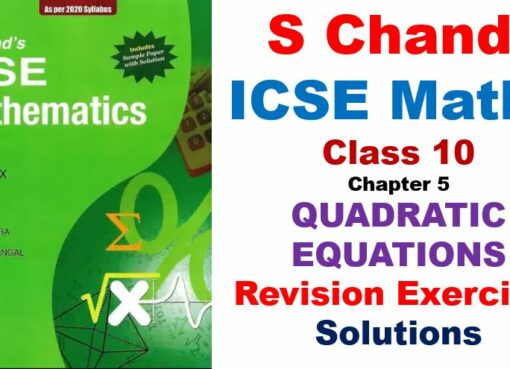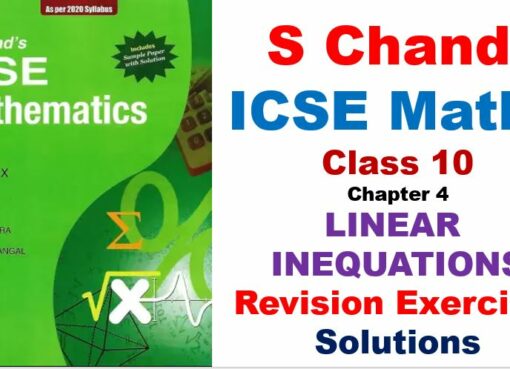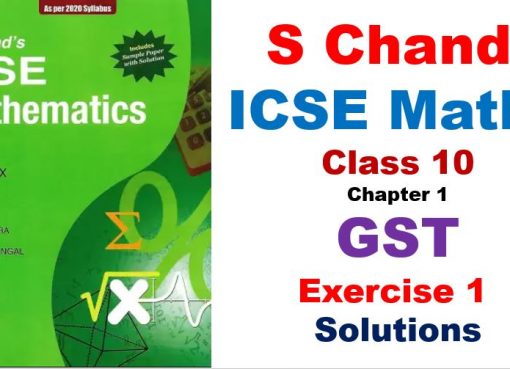Hi students, Welcome to Amans Maths Blogs (AMB). In this article, you will get Linear Inequalities Class 10 Maths Revision Notes Chapter 4 PDF.
ICSE Class 10 Maths Chapter 4 Linear Inequations Important Concepts
What is an Inequality?
In mathematics, a statement that contains > (greater than), ≥ (greater than or equal to), < (less than), ≤ (less than or equal to), ≠ (not equal to) sign are called an inequality. The inequality defines the comparison between two numbers or other mathematical expressions.
For example:
(i) a < b means that a is less than b.
(ii) a > b means that a is greater than b.
(iii) a ≤ b or a ⩽ b means that a is less than or equal to b.
(iv) a ≥ b or a ⩾ b means that a is greater than or equal to b.
(v) a ≠ b means that a is not equal to b.
What is an Inequations?
A mathematical statement that indicate the value of variables or an algebraic expression which is not equal to other value are called an inequation. These inequations are written using the inequalities signs, > (greater than), ≥ (greater than or equal to), < (less than), ≤ (less than or equal to), ≠ (not equal to).
For example:
(i) x < 5
(ii) y > 10
(iii) (3x + 6) ≤ 5
(iv) (2y – 9) ≥ 15
(v) (3k – 2) ≠ 5
What is an Linear Inequations?
A mathematical statements of any of the forms ax + b > 0, ax + b ≥ 0, ax + b < 0, ax + b ≤ 0 are called as linear inequations in variable x, where a, b are real numbers and a ≠ 0.
For example:
(i) x < 15
(ii) y > 12
(iii) (3x – 8) ≤ 15
(iv) (2y + 9) ≥ 15
(v) (3k + 2) ≠ 5
What are Replacement Set and Solution Set?
For an inequation, the set of elements or values from which the values of the variable are taken is called the replacement set or also known as domain of variable.
Now, the solution of an inequation depends upon the replacement set. So, an inequation may have one, many or no solution, depending upon the replacement set.
The solutions of inequation make a set of values of variable, and it is known as solution set of the inequation.
Every solution set is a subset of replacement set.
For example: we need to solve x + 2 > 7.
Depending the replacement set, the solutions set will be different.
If replacement set A = {0, 1, 2, 3, 4, 5, 6, 7, 8, 9, 10}, then solution of given inequation, means solution is S = {6, 7, 8, 9, 10}.
If replacement set B = {0, 1, 2, 3, 4, 5, 6, 7}, then solution of given inequation, means solution is S = {6, 7}.
If replacement set C = {0, 1, 2, 3, 4}, then solution of given inequation, means solution is S = φ (No Solution).
What are Inequality Rules or Postulates?
There are following inequality rules:
(i) An inequation is NOT changed if the same number is added to both sides of inequation.
For example:
x – 5 > 12
⇒ x – 5 + 5 > 12 + 5 (Adding 5 to both sides)
⇒ x > 17
(ii) An inequation is NOT changed if the same number is subtracted from both sides of inequation.
For example:
y + 12 < 15
⇒ y + 12 – 12 < 15 – 12 (Subtracting 12 from both sides)
⇒ y < 3
(iii) An inequation is NOT changed if the same positive number is multiplied to both sides of inequation.
For example:
x/5 < 2
⇒ x/5 * 5 < 2 * 5 (Multiplying 5 to both sides)
⇒ x < 10
(iv) An inequation is changed if the same negative number is multiplied to both sides of inequation. And, the inequality sign is reversed.
For example:
-x/3 < 4
⇒ -x/3 * (-3) > 4 * (-3) (Multiplying -3 to both sides)
⇒ x > -12
(v) An inequation is NOT changed if the same positive number divides both sides of inequation.
For example:
3x < 15
⇒ 3x / 3 < 15 / 3 (Both sides are divided by 3)
⇒ x < 5
(vi) An inequation is changed if the same negative number divides both sides of inequation. And, the inequality sign is reversed.
For example:
-3x < 21
⇒ -3x / -3 > 21 / -3 (Both sides are divided by -3)
⇒ x > -7
(vii) Any term of an inequation may be taken to other side with its sign changed without affecting the sign of inequality.
For example:
x + 10 < 51
⇒ x < 51 – 10 (10 is moved to RHS and it becomes negative without affecting inequality sign)
⇒ x < 41
Read : S Chand Class 10 ICSE Maths Linear Inequalities Exercise 4 Solutions PDF
Read : S Chand Class 10 ICSE Maths Linear Inequalities Revision Exercise Solutions PDF



